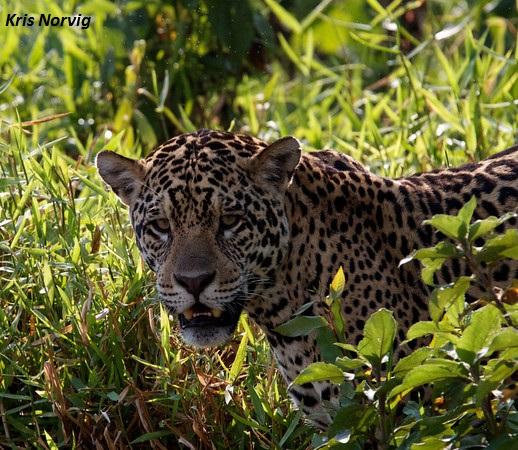Jaguars are one of the most iconic wildlife species in New World. They are, or historically have been, an important component of ecosystems from the United States to Argentina. They are the apex predator in these systems, especially when humans aren't present, and directly affect the behavior and abundance of hundreds of species, from terrestrial species like tapir and peccaries, arborial animals like sloths, to aquatic species like caiman, turtles and, at times, even fish like the giant Pirarucu.

Jaguars also have a complex relationship with humans and have been an important part of our human culture,mythology, and economy for thousands of years. From the earliest arrival of humans in Central and South, humans have feared and battled jaguars, honored them as part of their religions, depended on them for clothes and income, and told stories about them.
Jaguars are the epitome of what WCS calls a “Landscape Species” – they need huge areas to survive (the home range of a single jaguar can be hundreds of kilometers in size); they use and depend on an enormous range of habitats from grasslands to terra firme forests to flooded forests and wetlands; they interact strongly with human beings; and they help us, as scientists and conservationists, define the necessary size and connectivity of wild places.